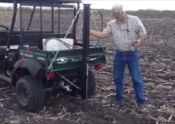
The EPA is proposing changes to the labeled uses of Acephate. These changes include “The proposed mitigation is to cancel all uses except tree injection…” Growers and other stakeholders are encouraged to comment to identify critical uses of acephate. Acephate, Proposed Interim Decision FR Notice: https://www.federalregister.gov/d/2024-09181 Docket: https://www.regulations.gov/docket/EPA-HQ-OPP-2008-0915 PID: https://www.regulations.gov/document/EPA-HQ-OPP-2008-0915-0069 See more here: 20240509_PID Summary for Core Group and IPM Centers.



